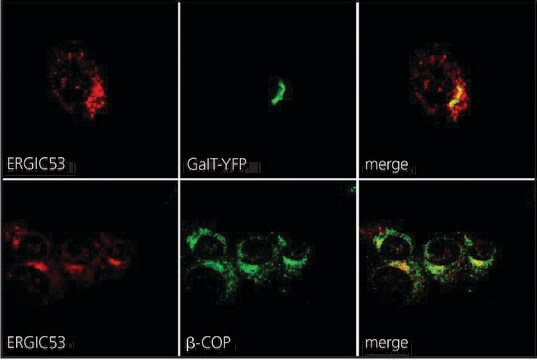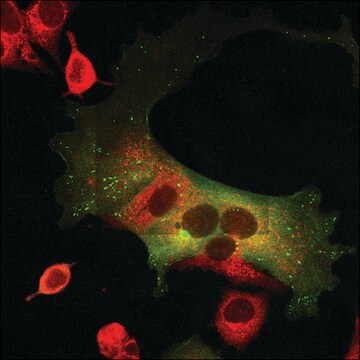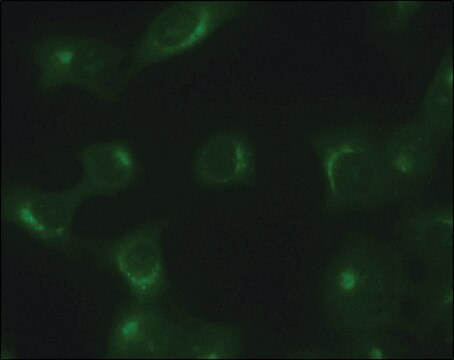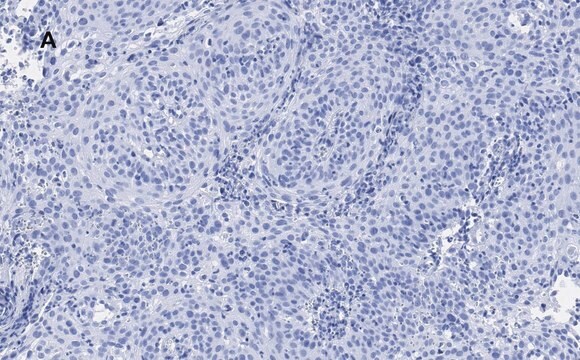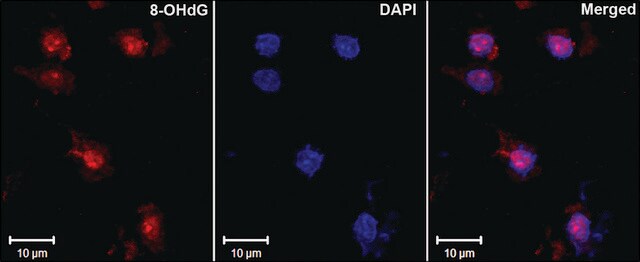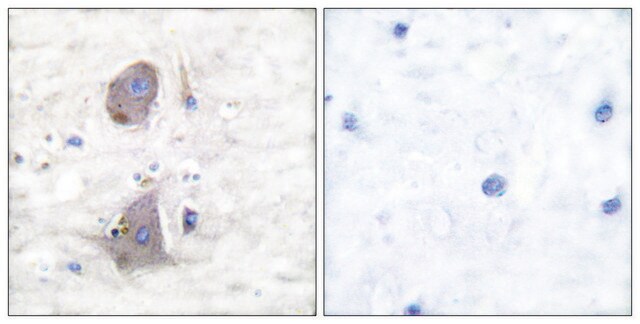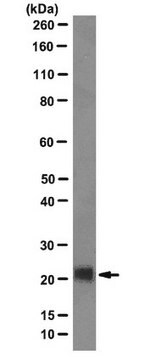SAB4200585
Anti-ERGIC-53 antibody, Mouse monoclonal
clone ERGIC-3, purified from hybridoma cell culture
Sinonimo/i:
Monoclonal Anti-ER-Golgi intermediate compartment 53 kDa protein, Monoclonal Anti-ERGIC-53 antibody produced in mouse, Monoclonal Anti-ERGIC53, Monoclonal Anti-F5F8D, Monoclonal Anti-Gp58, Monoclonal Anti-Intracellular mannose-specific lectin MR60, Monoclonal Anti-LMAN1, Monoclonal Anti-Lectin mannose-binding 1
About This Item
Prodotti consigliati
Origine biologica
mouse
Livello qualitativo
Coniugato
unconjugated
Forma dell’anticorpo
purified from hybridoma cell culture
Tipo di anticorpo
primary antibodies
Clone
ERGIC-3, monoclonal
Stato
buffered aqueous solution
PM
antigen ~58 kDa
Reattività contro le specie
mouse, human, rat
Concentrazione
~1 mg/mL
tecniche
immunoblotting: 1-2 μg/mL using whole extracts of human HeLa cells.
Isotipo
IgG1
N° accesso UniProt
Condizioni di spedizione
dry ice
Temperatura di conservazione
−20°C
modifica post-traduzionali bersaglio
unmodified
Informazioni sul gene
human ... LMAN1(3998)
mouse ... Lman1(70361)
rat ... Lman1(116666)
Descrizione generale
Immunogeno
Azioni biochim/fisiol
Stato fisico
Esclusione di responsabilità
Non trovi il prodotto giusto?
Prova il nostro Motore di ricerca dei prodotti.
Codice della classe di stoccaggio
10 - Combustible liquids
Punto d’infiammabilità (°F)
Not applicable
Punto d’infiammabilità (°C)
Not applicable
Scegli una delle versioni più recenti:
Possiedi già questo prodotto?
I documenti relativi ai prodotti acquistati recentemente sono disponibili nell’Archivio dei documenti.
Global Trade Item Number
| SKU | GTIN |
|---|---|
| SAB4200585-200UL | 4061838037039 |
Il team dei nostri ricercatori vanta grande esperienza in tutte le aree della ricerca quali Life Science, scienza dei materiali, sintesi chimica, cromatografia, discipline analitiche, ecc..
Contatta l'Assistenza Tecnica.